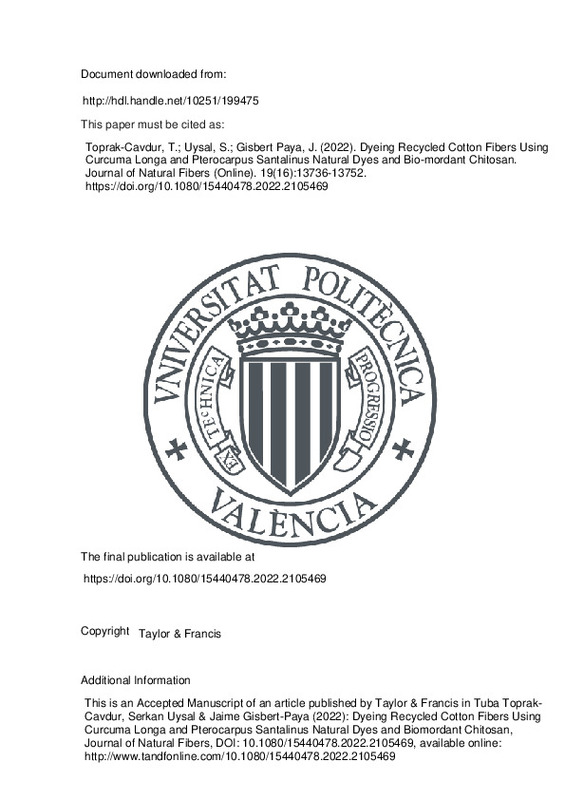JavaScript is disabled for your browser. Some features of this site may not work without it.
Buscar en RiuNet
Listar
Mi cuenta
Estadísticas
Ayuda RiuNet
Admin. UPV
Dyeing Recycled Cotton Fibers Using Curcuma Longa and Pterocarpus Santalinus Natural Dyes and Bio-mordant Chitosan
Mostrar el registro completo del ítem
Toprak-Cavdur, T.; Uysal, S.; Gisbert Paya, J. (2022). Dyeing Recycled Cotton Fibers Using Curcuma Longa and Pterocarpus Santalinus Natural Dyes and Bio-mordant Chitosan. Journal of Natural Fibers (Online). 19(16):13736-13752. https://doi.org/10.1080/15440478.2022.2105469
Por favor, use este identificador para citar o enlazar este ítem: http://hdl.handle.net/10251/199475
Ficheros en el ítem
Metadatos del ítem
| Título: | Dyeing Recycled Cotton Fibers Using Curcuma Longa and Pterocarpus Santalinus Natural Dyes and Bio-mordant Chitosan | |
| Autor: | Toprak-Cavdur, Tuba Uysal, Serkan | |
| Entidad UPV: |
|
|
| Fecha difusión: |
|
|
| Resumen: |
[EN] Problems such as the depletion of natural resources and the increase in envir-onmental pollution brought about by industrialization, the concept of recycling gained great importance. Natural dyes have gained importance ...[+]
|
|
| Palabras clave: |
|
|
| Derechos de uso: | Reconocimiento - No comercial (by-nc) | |
| Fuente: |
|
|
| DOI: |
|
|
| Editorial: |
|
|
| Versión del editor: | https://doi.org/10.1080/15440478.2022.2105469 | |
| Descripción: |
|
|
| Tipo: |
|







![[Cerrado]](/themes/UPV/images/candado.png)


